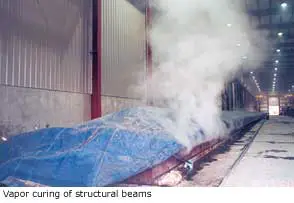Concrete curing is the process of keeping concrete under a specific environmental condition for promoting hydration by controlling the temperature and moisture movement from and into the concrete. Concrete curing is done to increase concrete strength & stability. Concrete curing method is decided according to the working procedure and weather condition. Generally, there are some common concrete curing methods applied widely that are described below.
Concrete curing method involves ponding, spraying or sprinkling of water, membrane, surface covering and shading etc. Below are 5 concrete curing methods with their individual advantages and limitations. If you have confusion between concrete and cement then read this post.
1. Sprinkling water

This concrete curing method requires huge amount of water. In this method, water is applied to the concrete after an interval of time. The water should be continuously applied so that the concrete does not dry out.
Advantages |
Disadvantages |
|
1. Concrete never dries as water is applied frequently. |
1. This method requires huge amount of water, so it is a bit costly. |
|
2. This method can be used in any surface i.e. horizontal, vertical. |
2. Ponding method
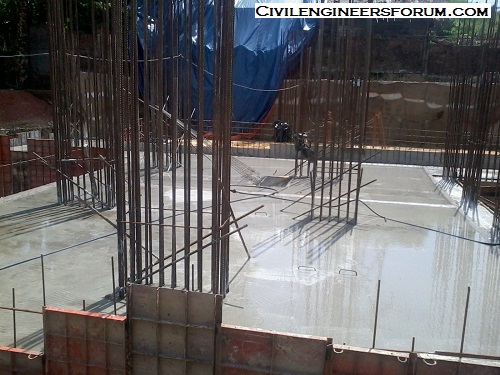
Ponding method is a popular and widely used concrete curing method. Concrete is cured by storing water on the horizontal plane i.e. slab, roof, road etc. After concrete casting, the surface is covered with canvas. After 24 hours, the canvas is removed and water is filled in small rectangular panels. A boundary is given in all the 4 sides so that the water cannot flow and stored so that the concrete beneath the water is cured properly. Ponding curing method is better than the others but it becomes hard to clean after curing is finished.
Advantages |
Disadvantages |
| 1. Better method compared to others in most conditions. | 1. Ponding method cannot be used in vertical surface. |
| 2. Advantageous for horizontal surface. | 2. Again, this method requires good amount of water. |
| 3. Helps in cement hydration process. |
3. After concrete curing is finished, it is difficult to clean the surface. |
3. Membrane curing
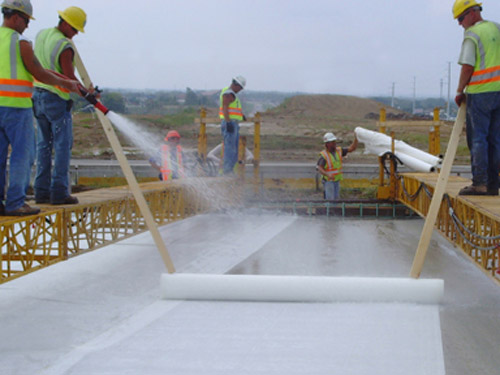
In this curing method, the concrete surface is covered with water resistant membrane. Membrane concrete curing will take about a week. The main purpose of this process is to resist the concrete evaporation. Wax emulsion, bitumen emulsion, water resistant bitumen paper and plastic sheet etc are used as membrane in this method. This is also known as sealing compound. In membrane curing, concrete strength gain is less than the concrete moisturizing methods.
Advantages |
Disadvantages |
| 1. Reduced evaporation. | 1. Concrete strength is reduced. |
| 2. Easy to use in horizontal surface. | 2. Membrane curing method is costly as wax emulsion, bitumen emulsion etc is used. |
| 3. Protects concrete surface from weathering. |
4. Steam curing
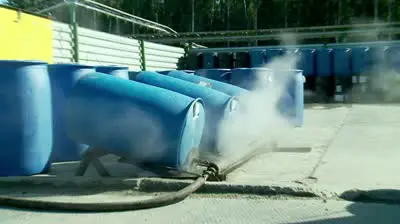
Steam is applied in small precast members and the concrere takes less time to cure properly. In this concrete curing method, the curing process is aggregated above 22° temperature. You can check this article for preferred concrete curing temperature under different conditions.
Advantages |
Disadvantages |
| 1. Concrete curing time is less than the others. | 1. Steam curing method cannot be applied in large surface. |
| 2. Steam curing is better in cold weather. | 2. It is costly as curing is done in temperature above 22°C. |
| 3. In small precast members, this method is advantageous. |
5. Sealed Curing
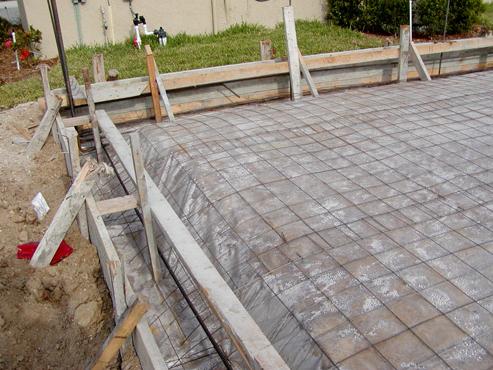
The main objective of this method is to prevent the evaporation of concrete and contain the moisture. Waterproof paper, plastic sheeting and curing membranes are the most widely used material for sealed curing. Each of these materials simply reduces the amount of water lost to evaporation. The major advantage is the flexibility of application to any number of shapes and sizes of concrete structures.
Advantages |
Disadvantages |
| 1. Protects concrete surface from weathering. | 1. Rarely used. |
| 2. Resist evaporation of concrete. | 2. Costly method as it requires water resistant paper, plastic sheets etc. |

